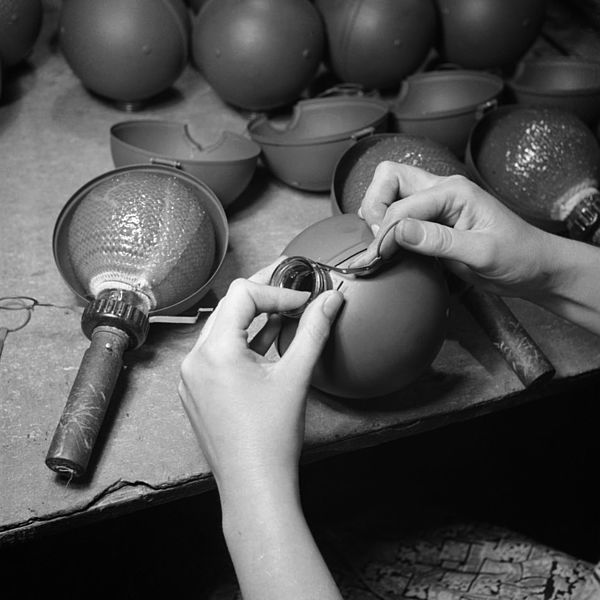03/01/2022 Regno Unito, Inghilterra
“If you ever come across anything suspicious like this item, please do not pick it up, contact your local law enforcement agency for assistance”
Wars bring out the best and worst of people; that’s what Major Richard Winters of Easy Company said. Another thing that war brings out is humanity’s creativity that was sadly used to destroy and kill each other. One proof of this was how people came up with different designs and structures of our weaponry— different types of tanks, rocket launchers, flamethrowers, booby traps, bombs. Some weapons were purely improvised affairs made in the thick of battle out of desperation. One of which was the sticky bomb that we’ve seen during WWII. Originally produced by the United Kingdom, this anti-tank weapon was a solution to the shortage of anti-tank guns.
The Brain Behind
It is said that Major Millis Jefferis designed the sticky bomb along with his team. This grenade called Number 74 Mk. 2 “consisted of a glass sphere containing an explosive made of nitroglycerin and additives which added stability to the mixture and gave it a squash-head-like effect, where the explosive charge deformed and spread outward on the target,” like a disc according to Google Arts and Culture. The glass shattered once the bomb hit the tank and deformed against the surface, allowing enough of the sticky fabric to stay on the armor. A five-second fuse would countdown to the detonation once the handle was released.
Nobody’s Perfect
This design had many flaws. One of them is that it failed to do its job to stick on surfaces, especially to muddy or dusty tanks. Also, since the charge was covered in a strong adhesive made of a fabric of woven wood fibers and surrounded by a sheet metal casing, throwers who were not careful enough could accidentally stick the grenade to their uniform. Now that’s not a cool way to die in a war. The Ordnance Board of the War Department didn’t like the finished product, but Winston Churchill thought otherwise, so these sticky bombs went to production. Just like what was feared, the grenade would sometimes stick to the thrower and kill them instantly. They ended up making 2.5 million of them.
Other Versions
The German had their version called Hafthohlladun. This one used magnets to adhere to the metal body of tanks. It was designed with three magnets that were paired with poles to create a strong magnetic field across their gap, making it easy to stick at various angles. Like the United Kingdom’s design, the major hiccup on this was that the soldier had to be close enough within sticking distance from the tank. The U.S. didn’t really have a production level sticky grenade or magnetic one like the Germans and British did. In the movie “Saving Private Ryan” Capt Miller explained how to make a “Sticky Bomb using socks, TNT, a lit fuse, and axle grease. He said it was in the army field manual if they wanted to look it up. We’ve never been able to find any reference to such a bomb in the WWII army field manual. It’s possible that it could exist in some handbook given to Rangers or Paratroopers specifically. but it wasn’t an army-wide type of bomb. While the idea of a sticky bomb may be stuck in our heads, the reality is that Hollywood made it up for the film.
Photo-Source: sofrep.com
If you find anything that appears to be an explosive device, do not touch it, leave it where it is and call the police. We will contact the appropriate agencies to properly dispose of the item.
Dear editors, Biography of a bomb is aimed at highlighting the danger caused by unexploded bombs. Moreover, the most important aspect is that we work completely non profit, raising awerness about this topic is what drives us. We apologize if we make use of pictures in yours articles, but we need them to put a context in how findings are done. We will (and we always do) cite source and author of the picture. We thank you for your comprehension





